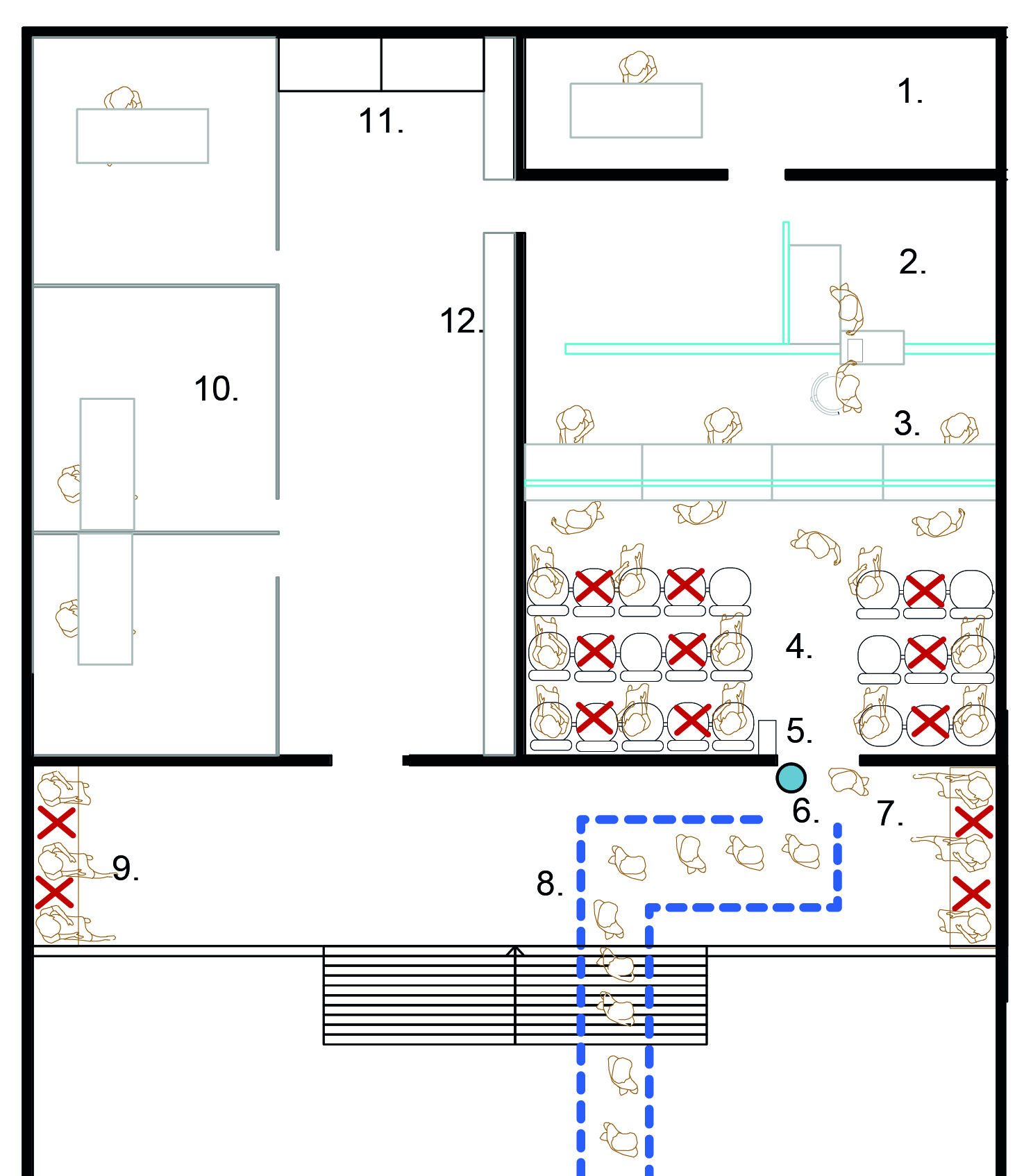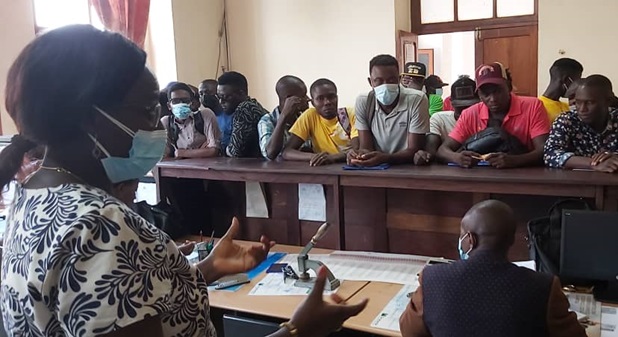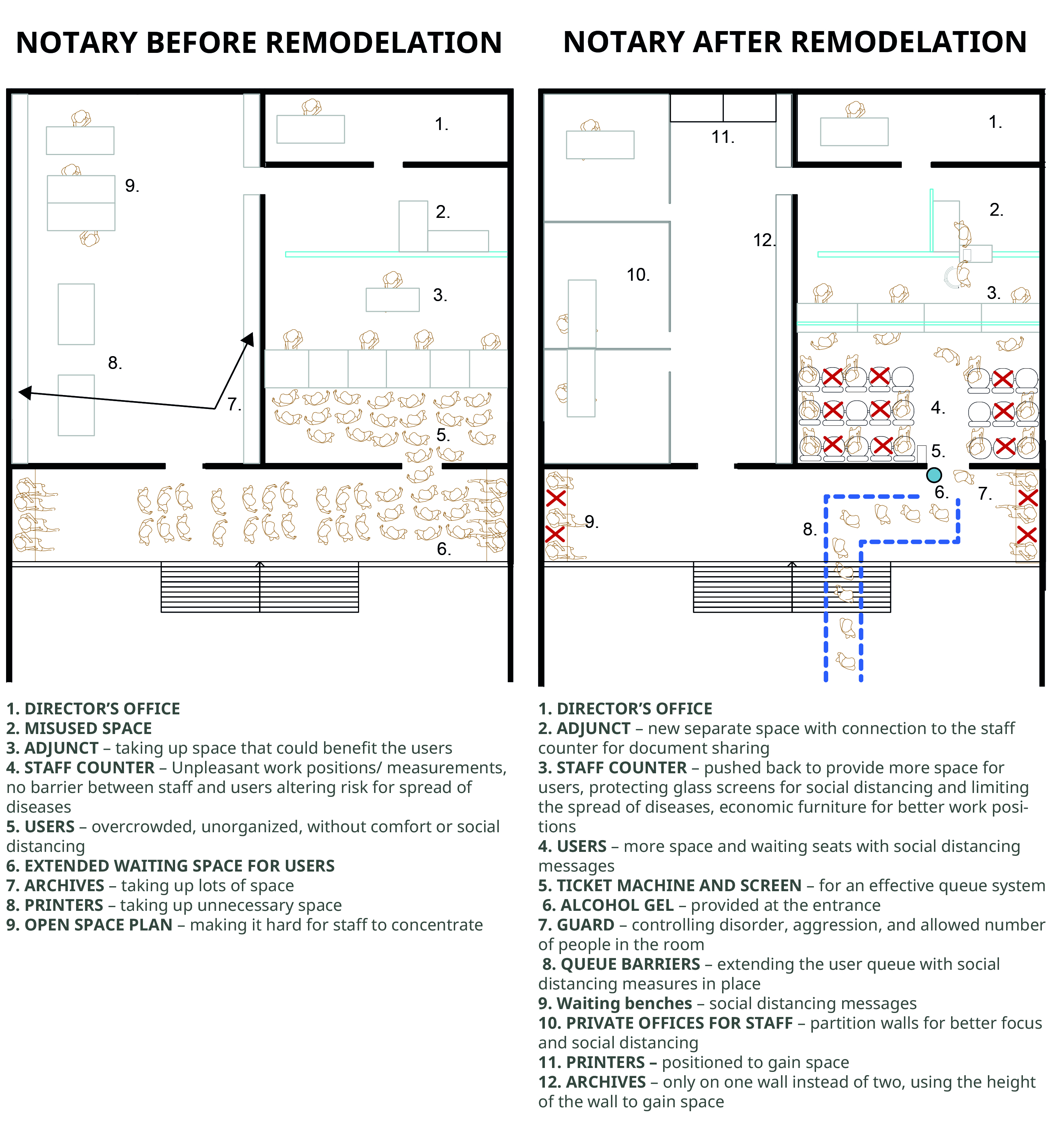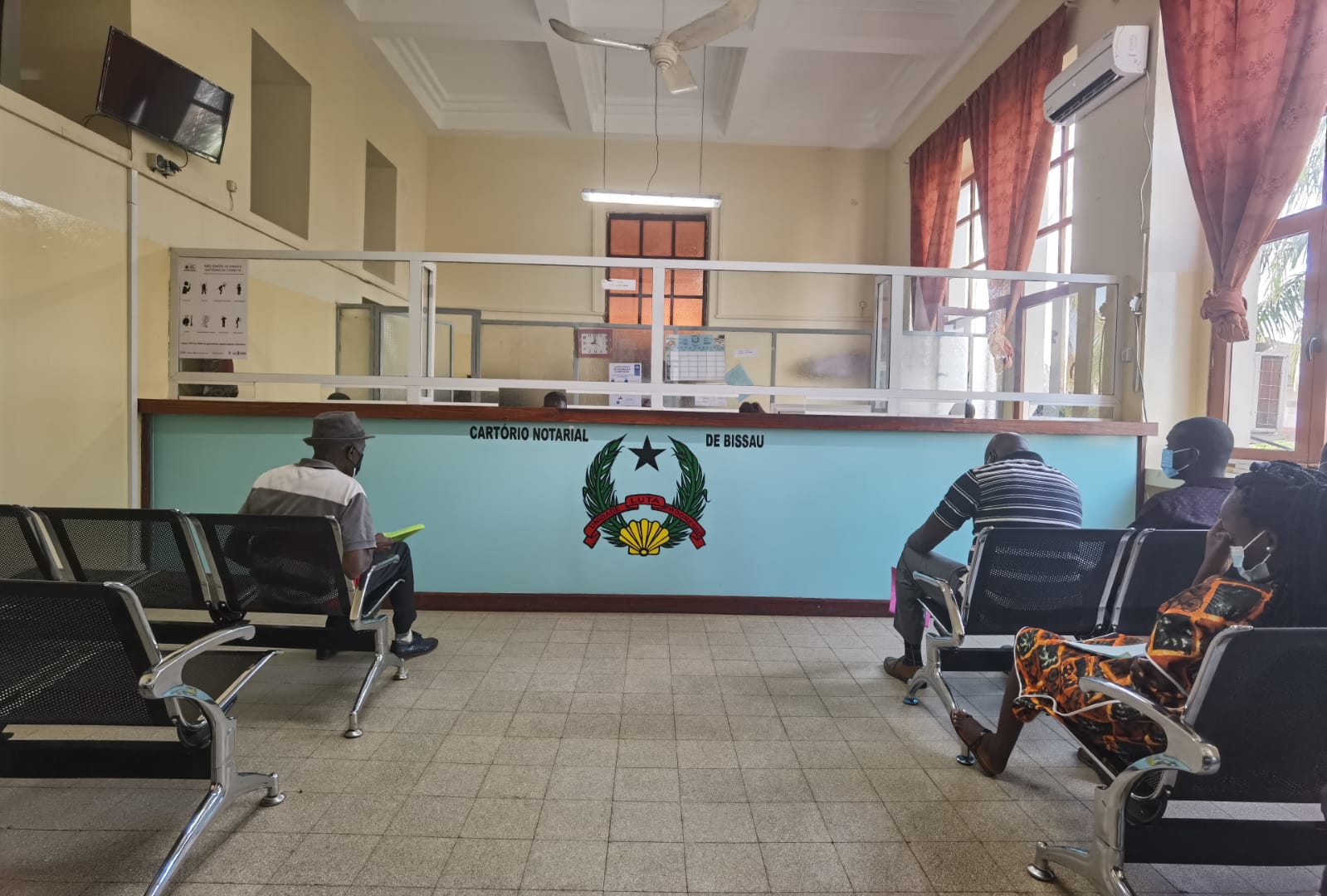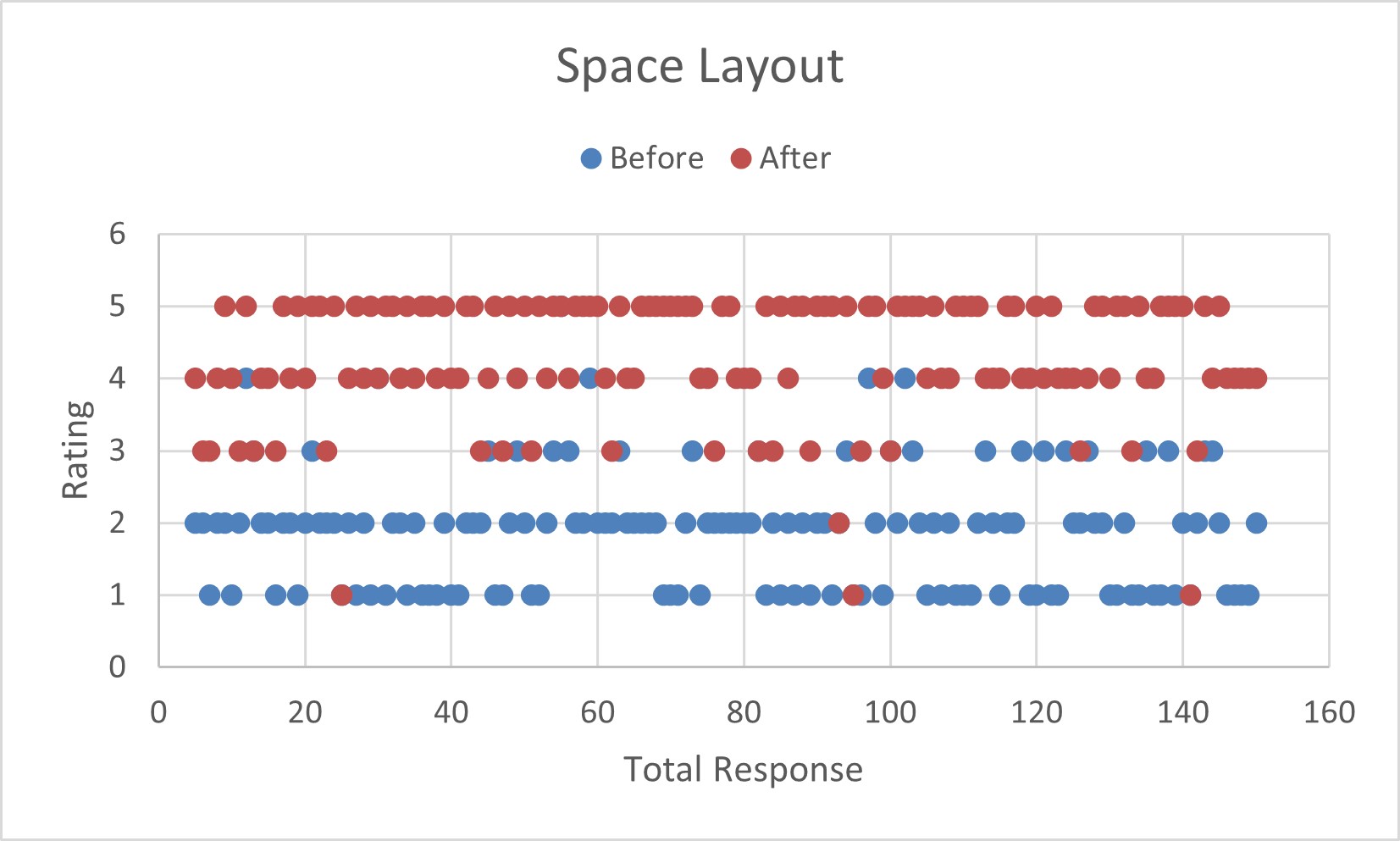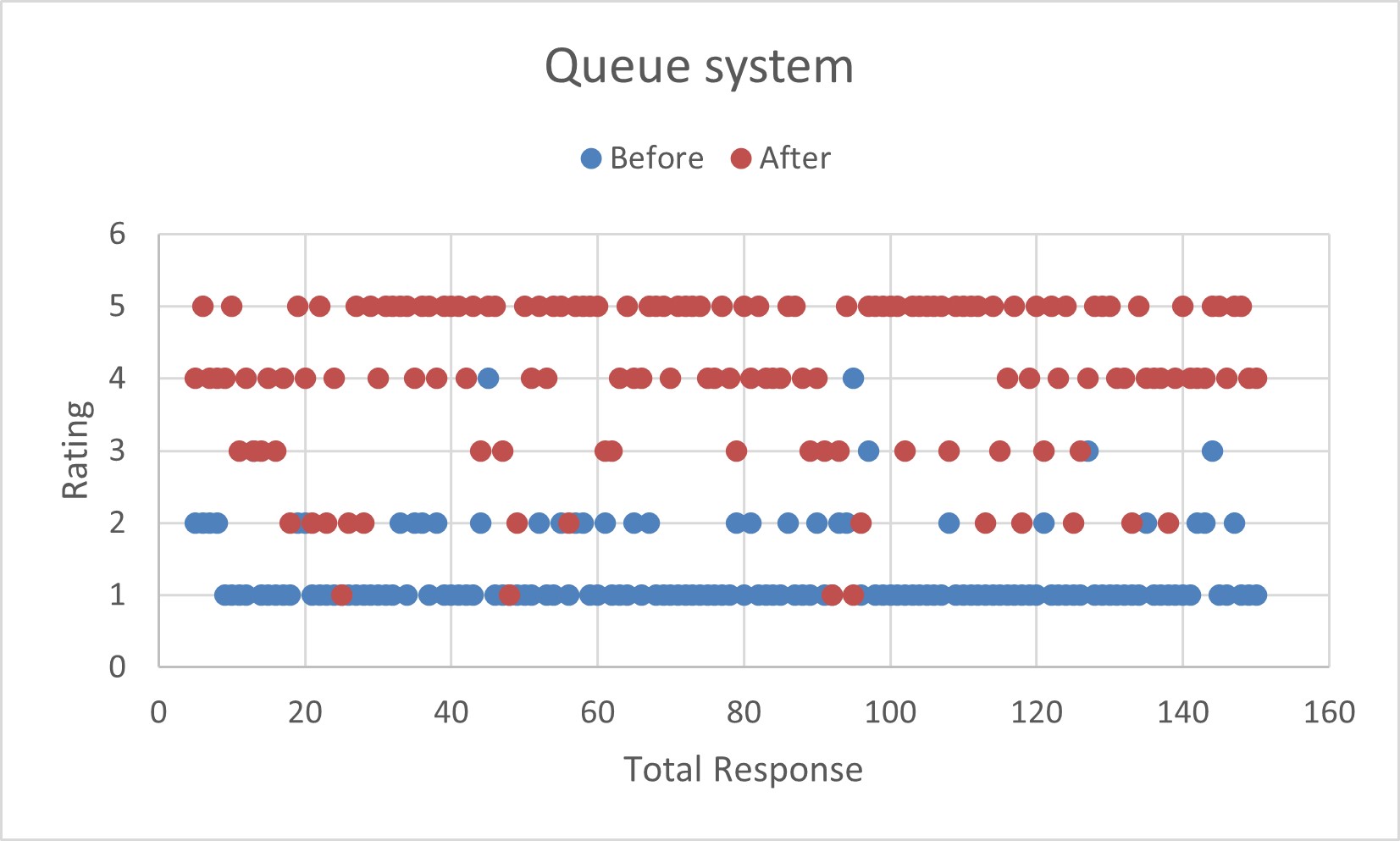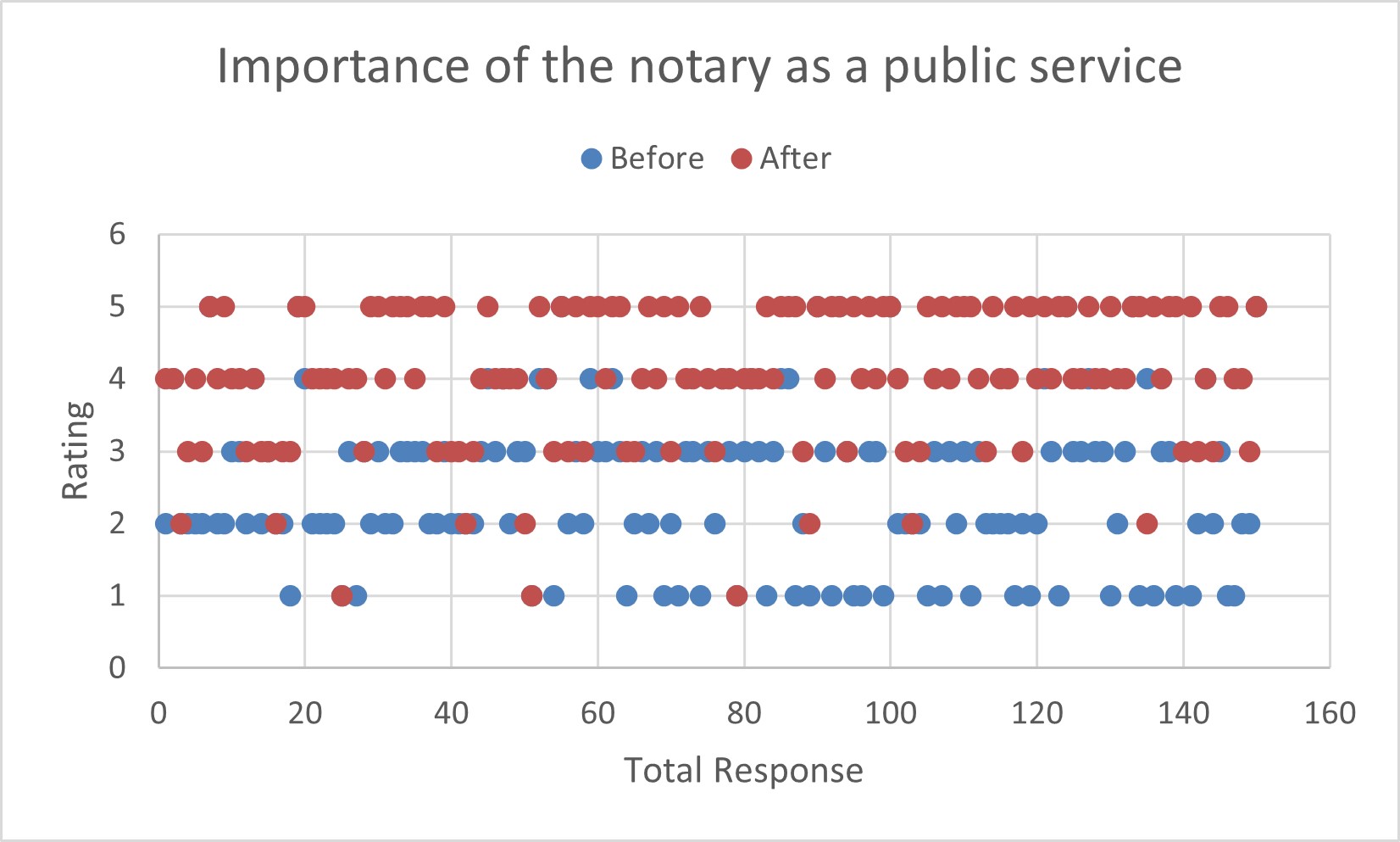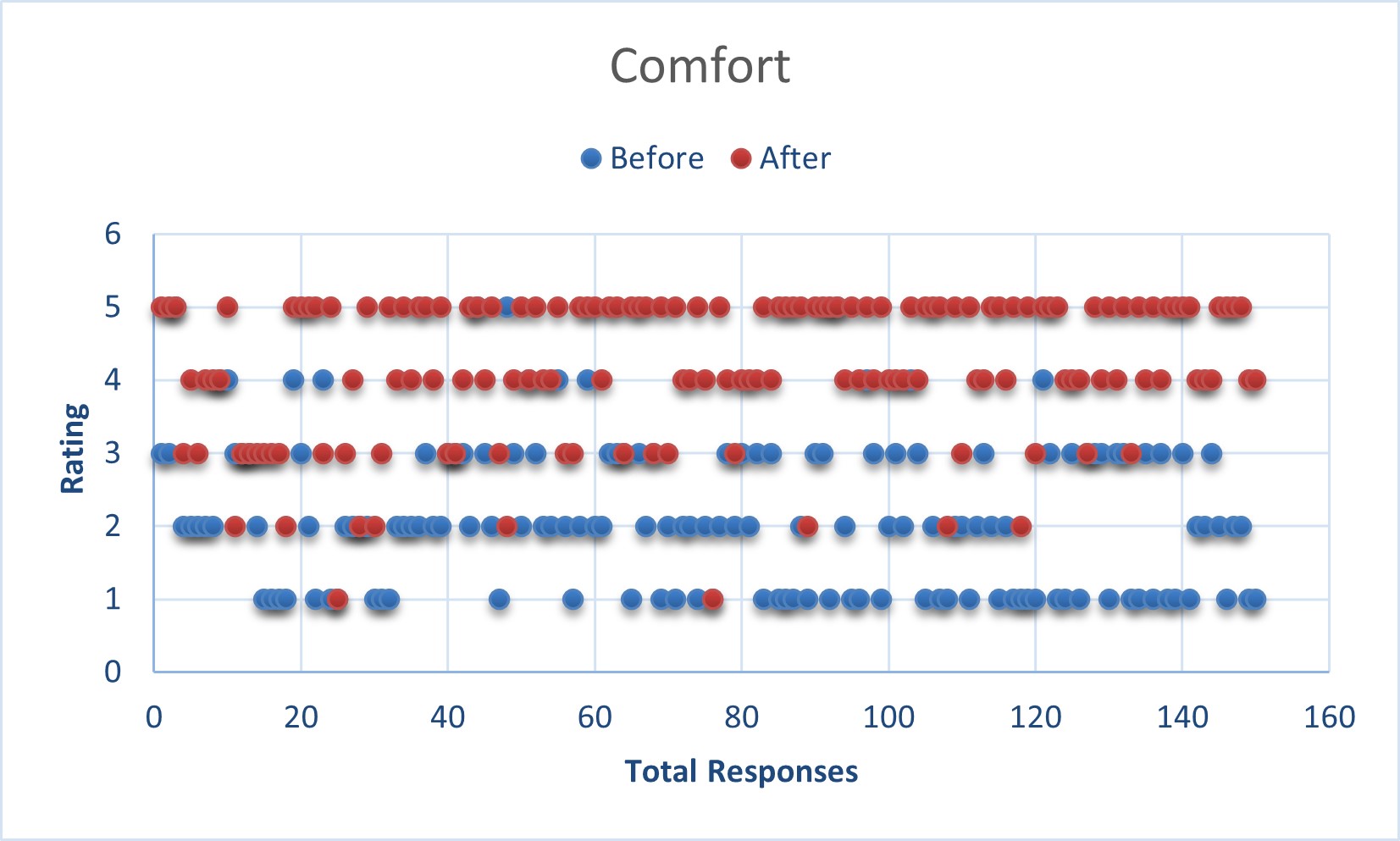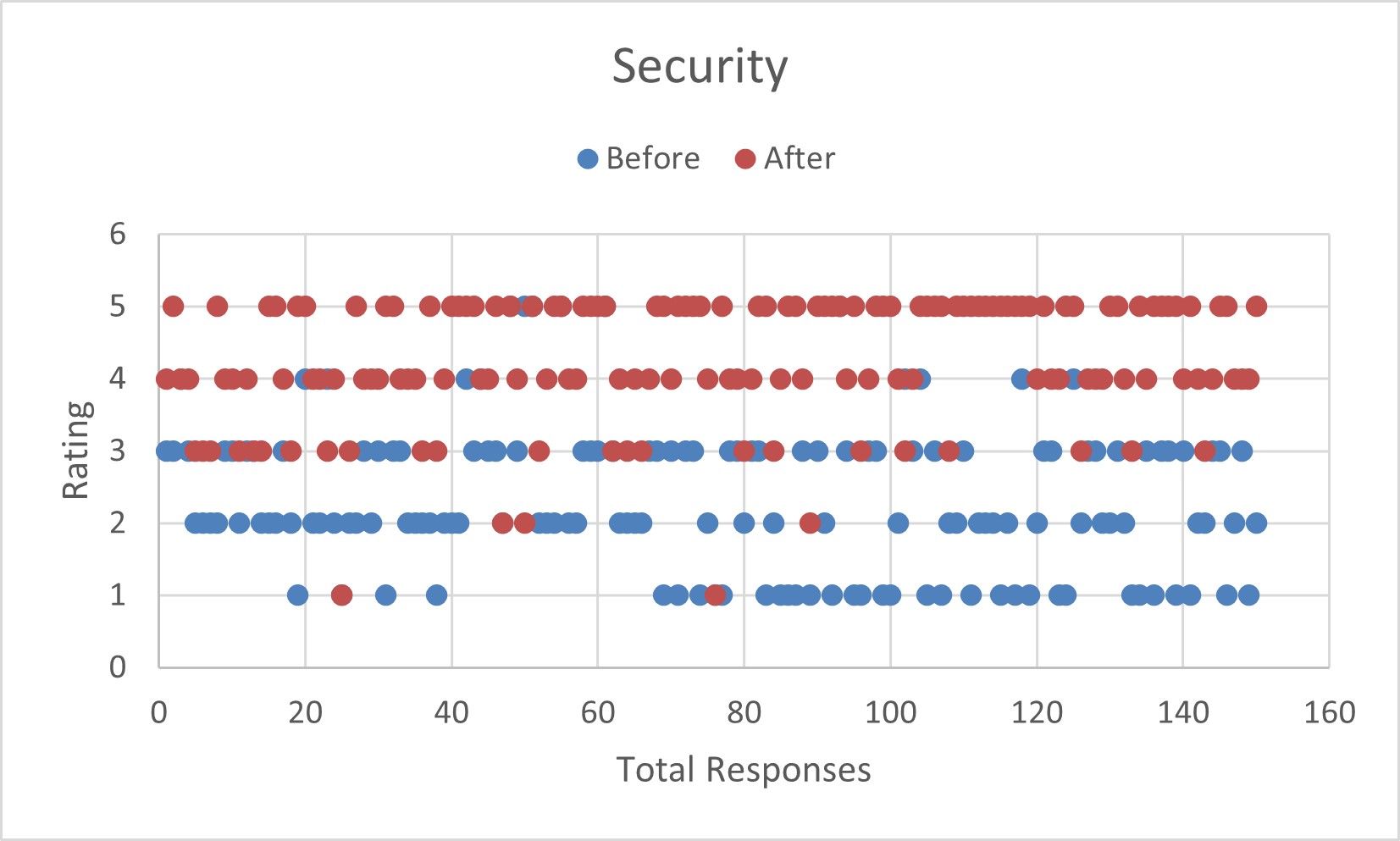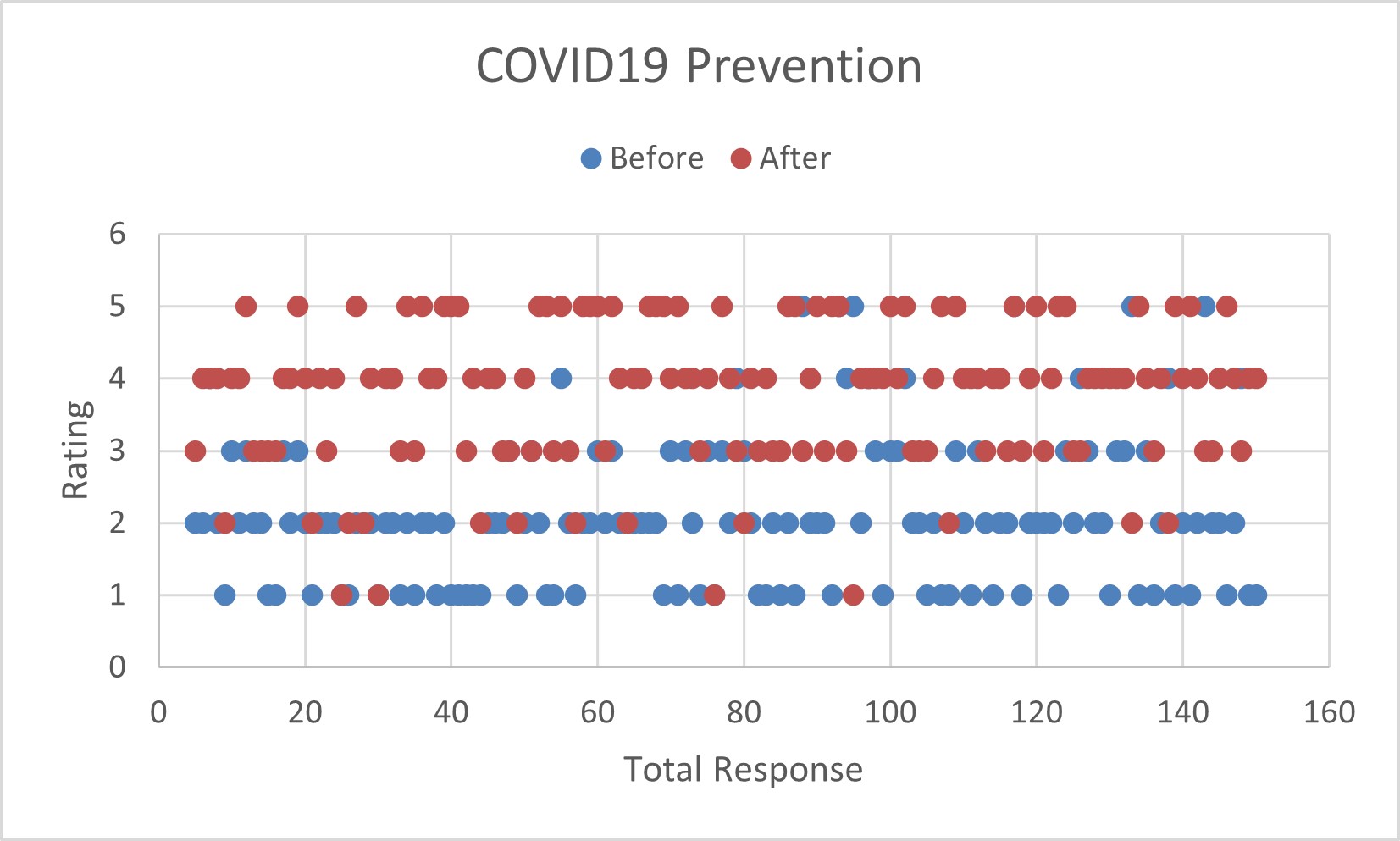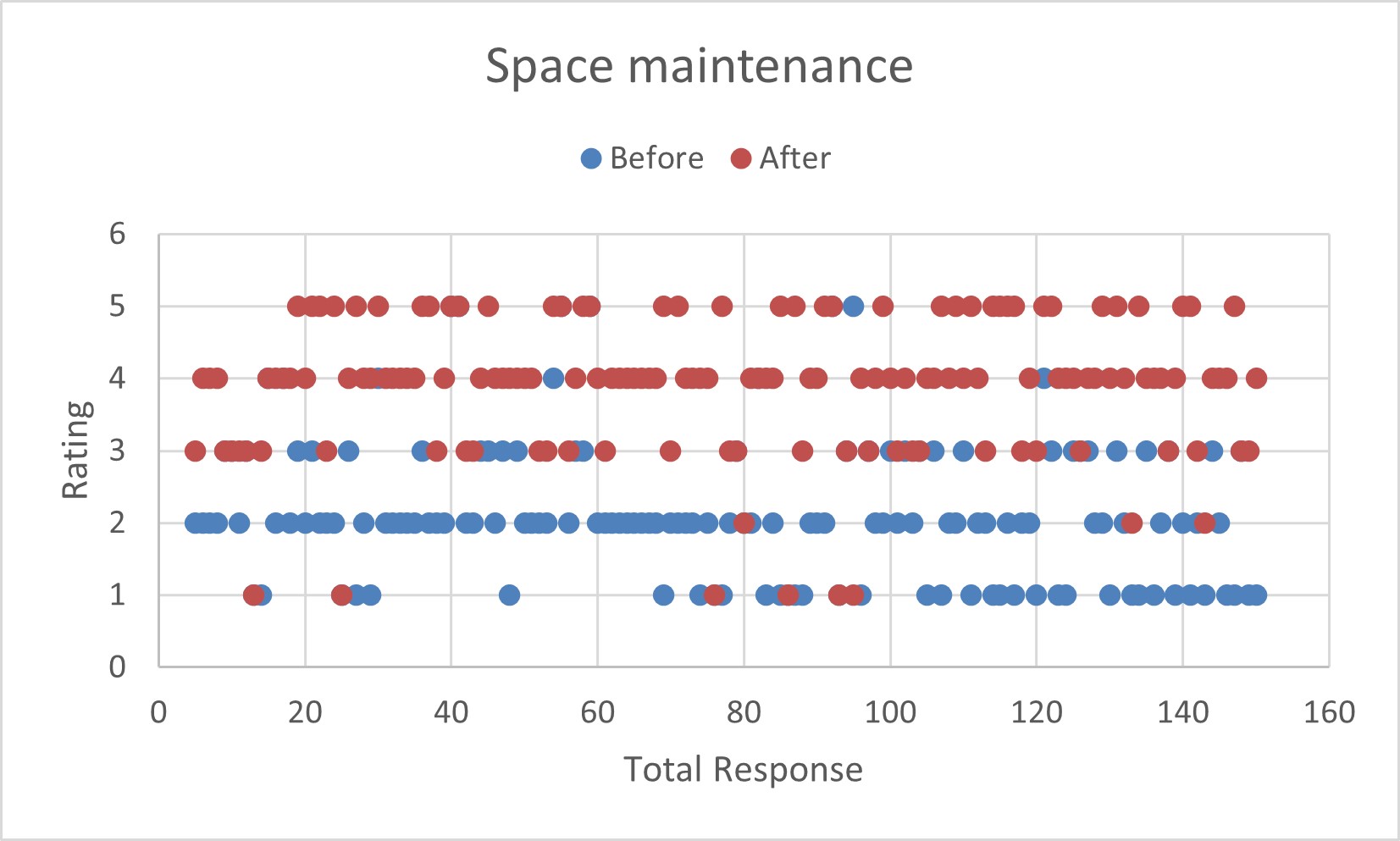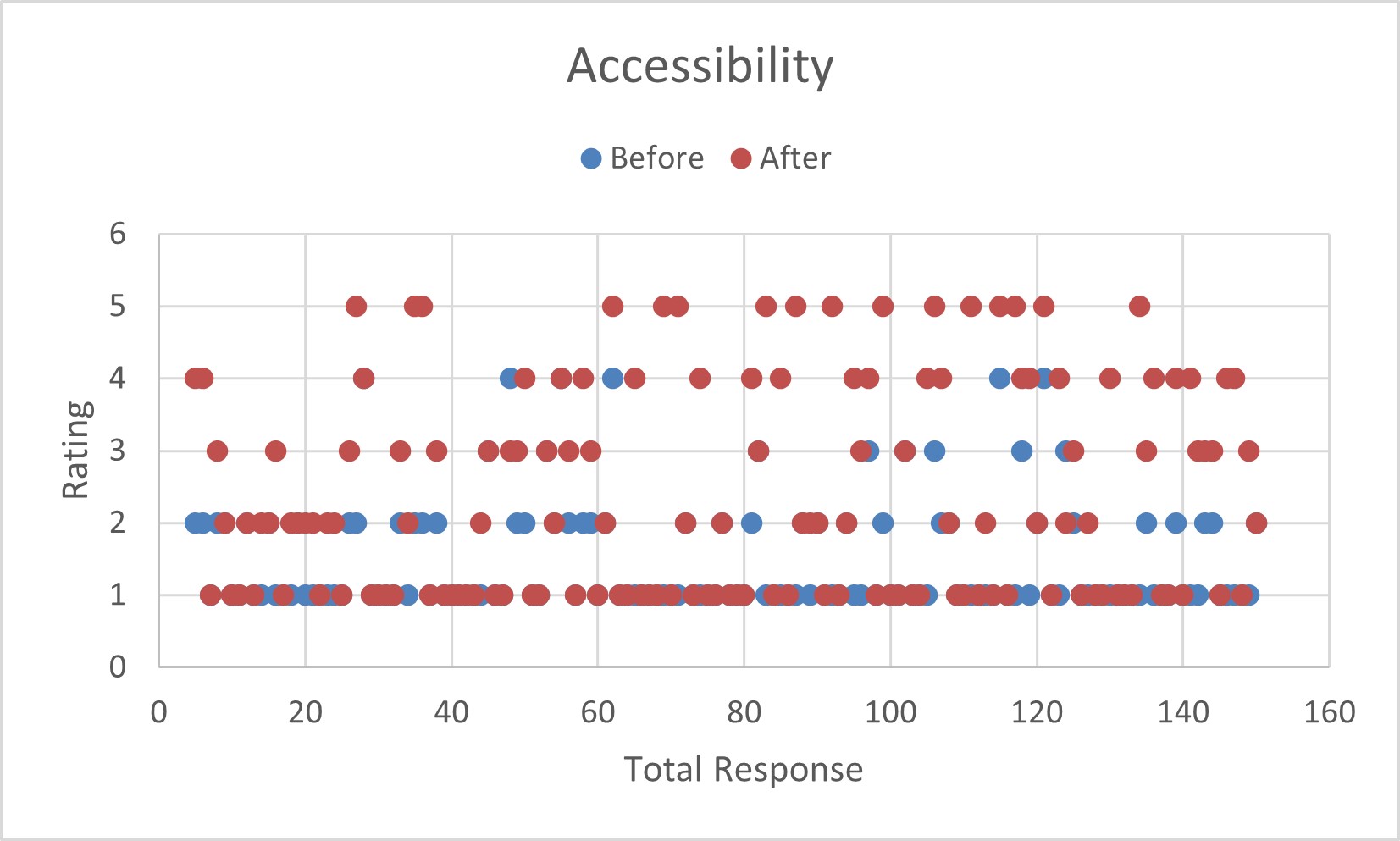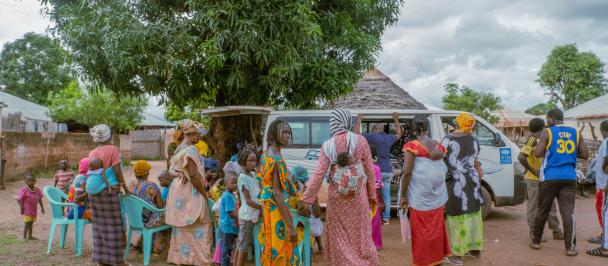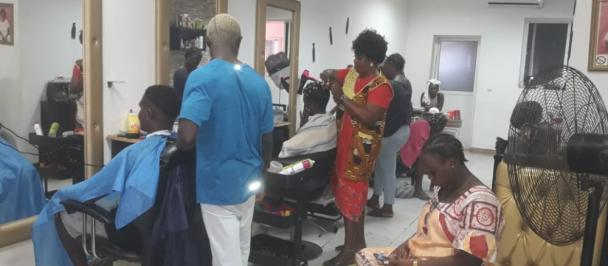Diagram of the Notary after remodelation. Drawing: Isa da Costa, UNDP Accelerator Lab Guinea Bissau
In June 2021, the UNDP Guinea Bissau Accelerator Lab embarked on a journey with the Ministry of Justice (MoJ) and the High Commission for COVID-19, to remodel the Notary service through participatory methods. Read more about the process in our previous blog HERE.
In this learning cycle, we set out to explore how co-creation, participatory design and Design Thinking could be used as tools to create processes that improve public service delivery. As an outcome of framing the challenge, we wanted to learn about the impact of the physical space (the Notary Office) on staff and users.
The notary before remodelation
The Notary Office was chosen as a focus area, as it is the busiest service provider at the Ministry of Justice of Bissau. In total, the Lab interviewed 255 users and 40 staff. Simultaneously, the Lab carried out a Collective Intelligence workshop, gathering staff, users, the High Commission for COVID-19, UNICEF, and the student association of Lusófona University among others, creating mutual understanding about the challenges faced as well as what caused them. The main challenge was identified as: inadequate physical space and the barriers it caused to meeting the needs of the users and staff. Some of the additional challenges presented were:
60 percent of the interview respondents did not consider the space adequate for its use
90 percent of the interview respondents felt there were no measures in place to protect against the spread of COVID-19 and other diseases.
Significant pressure from users, with staff increasingly alienating them for lack of understanding and at times, users would even verbally and physically abuse staff.
Low security in place, making staff fear for their personal safety.
Solutions were co-created to address the limitation implying the re-modeling and re-organization of the space as necessary. The space was remodeled using participatory design, prototyping and iteration, considering the needs and ideas of users and employees. The result was a space organized in a more efficient manner with benches including nudging messages about social distancing and glass protection separating staff and users. The Ministry hired two guards to control the flow and number of people in the space as well as to provide protection to the staff when needed. Additionally, a screen and queue number machine were re-installed properly, and training was provided to the staff on its usage.
Diagram of the Notary showing the changes before and after remodelation. Drawing: Isa da Costa, UNDP Accelerator Lab Guinea Bissau
The new space aims to improve public service delivery to the population and consolidate an effective service provision with measures in place that mitigate against COVID-19. Our two hypotheses for this learning cycle were:
H1: IF... participatory approach is used to tackle the challenges faced in the Notary, THEN... staff and users will feel a stronger sense of belonging, ultimately improving the maintenance of the space.
H2: IF... The space of the Notary is re-designed through a participatory process, THEN... the needs of users and staff will be better met and improve the perception of how the Notary service is delivered to the population
Measuring the impact of the remodelation
A couple of weeks after the intervention, the Lab went back to the Notary, interviewing staff and users to measure the impact of the remodelation and test our hypotheses with a focus on psychological, and sociological change. To evaluate our hypothesis, we used diverse methodologies including social experiment with users and staff of the Notary through a pre-post survey.
The Notary after remodelation. Photo: Isa da Costa, UNDP Accelerator Lab Guinea Bissau
Main finding: Improved access to efficient service delivery
Source: Analysis from user survey data, 2022
One of the main findings was that the user and staff perception of an effective service delivery increased significantly after remodelation . Users felt that they could get what they came for faster and delivered to them in a better way and staff felt that they could do their job in a more efficient way. Our second hypothesis “IF... The space of the Notary is re-designed through a participatory process, THEN... users and staff needs will be better met and improve the perception of how the Notary service is delivered to the population,” was proven through the results of the pre-post survey.
Functionality and perception of the importance of the Notary as a public service
Source: Analysis from user survey data, 2022
Source: Analysis from user survey data, 2022
Source: Analysis from user survey data, 2022
Users also felt that the arrangement and functionality improved after introducing new benches with social distancing messages, a clear queue system, and a cap on the number of people allowed inside the room at the same time. Additionally, the perception of the Notary as an important public service also improved with the changes made to the space. Similar findings were made through the staff survey.
Psychological and sociological changes
Source: Analysis from user survey data, 2022
Source: Analysis from user survey data, 2022
After the remodelation and the changes made, the Lab also measured a positive change in psychological and sociological aspects such as cleanliness, comfort, and perceived security in the space. Similar findings were made through the staff survey.
Covid-19 prevention
Source: Analysis from user survey data, 2022
Users felt that better measures were taken to protect against covid-19 and other diseases after the remodelation, showing the importance of investing in basic items such as alcohol gel at the entrance, a glass protecting screen between users and staff along with social distancing messages on walls, floors, and seats. Similar findings were made through the staff survey.
Maintenance
Source: Analysis from user survey data, 2022
After the remodelation, users reported that maintenance of the space had improved. Similar findings were made for the staff who in addition, also felt that collaboration between staff and users regarding maintenance of the space improved after the participatory processes. The results of the pre-post survey proved our first hypothesis: "IF... participatory approach is used to tackle the challenges faced in the Notary... THEN staff and users will feel a stronger sense of belonging, ultimately altering maintenance." At the same time, the hypothesis was disapproved through our observations of the space a couple of months after its inauguration where we found the ticket machine out of use and some destroyed benches (possibly due to poor quality).
Inclusiveness
Source: Analysis from user survey data, 2022
In terms of inclusiveness and accessibility for users and staff with disabilities, it is a clear area in need of improvement mainly because inclusiveness fell outside the focus of the remodelation, as PWDs (Person With Disabilities) were not part of the participatory process. Today the space is better organized but still lacks a ramp to access the entrance of the Notary resulting in a non-inclusive space.
Looking forward
Through this learning cycle, the Lab generated a few major insights and areas of improvement which could benefit similar interventions in the future:
1. Inclusive designs: To make the public service more inclusive and user-friendly, the design of the space should be prepared and tested from the perspective of the users. In our process, unfortunately there was a lack of participation from PWDs reflecting flaws in the final design. For future processes it is recommended that representatives from diverse groups of PWDs are included in the design process to make the space more inclusive.
2. Public Participation: Users and the student association from the nearby university were included in the process through collective intelligence sessions during the design and implementation phase. However, after handing over the Notary to the Ministry of Justice, there has been no regular feedback from these groups. As part of our process, we placed a physical feedback box to collect user views and measured many contributions stating a need for a feedback system. Additionally, by observing the space it is noted that lack of maintenance is still a challenge. Therefore, we believe that the continuity and facilitation of public engagement from users is crucial to ensure that the infrastructure is inclusive, properly utilized and maintained to fit the needs of the users.
3. Engagement from the Ministry: The Ministry was engaged throughout the full process and took different initiatives such as repainting the new space and hiring two guards after learning about the challenges in relation to security and the spread of diseases. Additionally, other surrounding services such as the Building and Automobile Record’s Office, also took inspiration from the process at the Notary Office and used a similar approach to space arrangement. The engagement of the Ministry is crucial to ensure maintenance and sustainability.
4. Digitalization: This learning cycle focused on the physical space and did not give room to explore many things that came up during the exploration phase. For example, another challenge that was raised during the Collective Intelligence workshop was the need for digitalization as all processes in the Ministry of Justice currently are carried out manually creating slow and inefficient processes without transparency. Our next learning cycle focuses on the digitalization of services in the Ministry of Justice.
5. Transparency: Another discussion raised from the Collective Intelligence workshops was transparency. Inefficient processes, corruption and lack of transparency are some of the effects enabled by manual processes. From the user point of view, there is a strong need for transparency in public service delivery, i.e. put price lists on the walls and make information available to the users through creating a webpage etc.
6. Maintenance: The results showed that both staff and users perceived that the maintenance of the space had improved after the remodelation. On the other hand, when the Lab went back to observe the space a few months later, it was clear that maintenance is still an area that can be improved as for example benches, queue barriers, social distancing messages were not in a functional state anymore.
7. Customer service: One of the main findings of this learning cycle was that the user and staff perception of an effective service delivery increased significantly after remodelation. On the other hand, it is still clear that customer service is an area in need of improvement and that there seems to be that the perception of staff that they are doing the users a favor instead of providing them with a service of quality. For the future, the Lab plans to explore how we can draw learnings from other service sectors such as for example, hotel and restaurants to improve customer service delivery.
The Lab plans to share the insights among other ministries, advocating for inclusive constructions and remodelations and how they ultimately have the possibility to improve access to public service delivery.

 Locations
Locations
